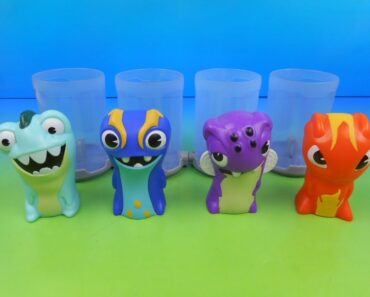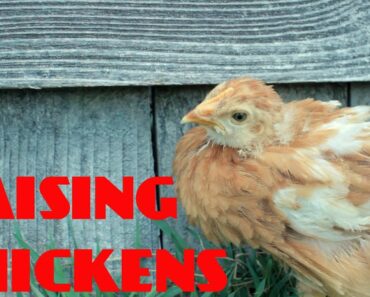If you’ve seen any Spider-Man movie, you may know about the scorpion villain spraying deadly acid from its venomous tail. The first things that come to our minds when we think of scorpions are their venomous sting and their stark resemblance to lobsters. But, what else do you know about these intriguing creatures?
Although these fearsome predators can never be cute, cuddly, or tamed, it’s worth learning about them. From using their sting to defend themselves against predators or being able to live in some of the harshest environments, there’s so much more to learn about these super cool yet creepy crawly creatures.
Here are some interesting scorpion facts for kids.
Is Scorpion An Insect?
No, in fact, they prey on insects. Creatures that fall into the category of insects need to have specific anatomical structures, including six legs, one or two pairs of wings, and a body that is divided into three parts, namely the head, thorax, and abdomen. Scorpions are eight-legged creatures with no wings, and their bodies are divided into two parts, namely the cephalothorax or prosoma and the abdomen or opisthosoma (more on this below).
What Do Scorpions Eat?
Scorpions are born with a survival instinct and are designed to survive in harsh climates. Their diet primarily consists of insects. Compared to other arachnids (spiders, ticks, mites, etc.), scorpions have the unique ability to slow their metabolism and oxygen intake such that they can survive on only one insect a year. They are also able to quickly attack and hunt their prey whenever the need arises.
What Does A Scorpion Look Like?
The anatomy of a scorpion has been explained in detail below.
- Scorpions have a hard exoskeleton made out of chitin — a hard, protective, and flexible substance composed of polysaccharide and nitrogen.
- A scorpion’s body is divided into two major components — the cephalothorax and the opisthosoma.
- The cephalothorax is a fused head and thorax, comprising the eyes, mouth, and chelicerae. It contains a pair of eyes at the top, called the median eyes, and two to five pairs of eyes at the sides called the lateral eyes.
- The opisthosoma is the posterior part of the body that is attached to the cephalothorax. It comprises the abdomen and respiratory organs of the scorpions. The section of opisthosoma that bears the legs is called the mesosoma.
- The telson is a bulb located at the end of a scorpion’s body and consists of the two venom glands. It is covered with sensory hairs on the outside. This bulbous part of a scorpion’s body, with the help of its stinger or aculeus, is responsible for puncturing the chosen prey and transferring the potent venom that kills the prey.
- The segmented curved tail and the stinger of a scorpion’s body form the metasoma — the posterior section of the opisthosoma.
- The chelicerae are jaw-like structures right outside the mouth of the scorpion. They help the scorpion hold and crush the prey before swallowing it.
Where Do Scorpions Live?
These predatory arachnids are built to survive in the toughest environments of the world. Even when exposed to harsh climates and temperatures, scorpions can adapt and survive. However, the only thing that these burrowing creatures cannot live without is soil. You will usually find them everywhere you find soil — in deserts, forests, and mountainous areas.
How Many Legs Do Scorpions Have?
Scorpions are eight-legged arachnids. Their pedipalps can be confused with their legs. The pedipalps are a pair of appendages attached at the anterior end of the cephalothorax. Each pedipalp ends with a claw- or pincer-like structure called chela, which gives a distinctive look to a scorpion.
Pedipalps serve several purposes, including prey capture, self-defense, courtship, and burrow excavation.
Reproduction And Life Cycle Of A Scorpion
Scorpions observe sexual reproduction, that is, reproduction takes place through mating between a male scorpion and a female scorpion.
- First, the females release an attractant or chemical scent called pheromones, which attract males searching for a mate.
- Once the male tracks down the female, it uses its pedipalps to get a hold of the female’s pedipalps. They hold on to each other and indulge in a sort of dance. The male then deposits the sperm inside the female through the transfer of spermatophore, which is a capsule or mass containing the sperms.
- On coming in contact with this structure, the female draws the sperms into her genital pores for fertilization.
- The fertilized eggs remain inside the female’s body and develop into embryos. These are nourished inside the body for anywhere between a few months to a year.
- Once the gestation period ends, the mother delivers the baby scorpions or the nymphs.
- The nymphs climb onto their mother’s back soon after delivery, until their first molt (shedding of skin).
- After going through a series of molting phases, the nymphs become mature enough to fend for themselves.
You can broadly divide the life cycle of a scorpion into:
- Eggs
- Nymphs
- Adults
20 Facts About Scorpions For Kids
- Scorpions belong to the scientific order called Scorpiones, derived from the Latin word scorpius.
- Scorpions are invertebrates, meaning they have no vertebrae or bones inside their body.
- Scorpions belong to the class of arachnids or joint-legged invertebrates and are closely related to camel spiders, mites, solifugae, and ticks.
- The average lifespan of a scorpion is around 3–8 years.
- A full-sized adult scorpion’s length ranges from 2.5–8in.
- Scorpions are carnivorous, and thus, eat insects, arachnids, reptiles, and even small mammals.
- The mating season for scorpions is usually from spring to early fall.
- The average size of a female scorpion’s brood is 25, although some species may have a brood size of 100.
- There are more than 2,000 scorpion species in the world.
- Only about 30 to 40 species of scorpions have venom that is strong enough to kill a human.
- Did you know that most scorpions glow under ultraviolet light? The phenomenon is due to the presence of certain chemicals in the scorpion’s exoskeleton, which is called the cuticle.
- In rare cases, a scorpion’s mating ritual could lead to stinging or sexual cannibalism. For this reason, the males usually leave from the spot as soon as the process of mating is complete.
- Unlike most arachnids, scorpions are not oviparous, meaning they do not lay their eggs. Scorpions are viviparous, meaning they give birth to live young ones.
- Scorpions are nocturnal and usually hunt at night.
- Scorpion babies are often confused with larvae, but they are not. They are miniature versions of the adults.
- Baby scorpions or scorplings are very tender and vulnerable when born and need the attention and care of the parents at least until their first molt.
- Baby scorpions molt an average six times before they become adults.
- The mating process in scorpions could take almost an entire day.
- Scorpions usually hibernate during the winter since they prefer warmer weather.
- Scorpions are believed to have been around before the age of the dinosaurs.
Scorpions are amazing creatures but extremely dangerous. They have their own unique venom and have one of the most potent venoms in the world. They have high adaptability and are designed to survive in the harshest of conditions. We hope this article awakens your child’s curiosity about scorpions and other various peculiar creatures found in nature.

































